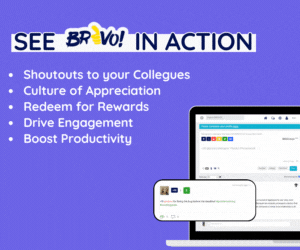
Employee engagement involves sharing ideas among staff members of an organization and boosting the morale and innovative capabilities of employees.
Moreover, engagement is much more than attraction, retention, and commitment. It varies from job to job, as it is focused more on how the individual employee involves themselves while performing their task.
Many factors play into employee engagement. Things like how connected employees are with their peers and manager and how satisfied they feel at work, and how often they feel acknowledged and appreciated for their contributions are just a few factors related to employee engagement.
Reasons Why Your Employee Engagement Isn’t Working
Employee engagement takes more than just happy employees. It involves employee commitment to the company and its customers. Plus, it involves managerial and executive commitment to those employees.
Moreover requires open communication, as well as care and inspiration. And it involves making employees believe they belong to something beyond just a paycheck.
1. Poor Communication

Organizations define goals and targets on how to achieve success. Unfortunately, such values are not often adequately communicated to employees, resulting in a lack of employee engagement.
Nobody wants to believe they were doing something wrong after the fact, without any communication of the direction they should have been taking.
Repetition is better than risking not getting your view across in the first place, so don’t think twice to talk about your organization’s aspirations at every opportunity.
2. No Feeling Of Company Culture

Employee engagement is much more than how workers relate to each other. Employees may enjoy each other’s company, but that doesn’t mean they are putting effort into their jobs the rest of the time.
Company culture includes the connection employees have with each other as well as the link they have with their work, customers, and their role in the organization.
Besides, employees without any sense of company culture won’t turn to their colleagues for assistance and support when needed. Likewise, engaged employees convey their concerns, dreams, goals, and aspirations to managers and supervisors.
Other than that, not listening to what they have to say leads to failure in ensuring engagement. Sometimes, this problem is because of a manager who doesn’t invest time in one-on-one meetings. Supervisors need to spend time knowing their employees and encouraging direct and honest communication.
Lack of deeper relationships makes employees shift to another firm. In either case, employees can become disengaged and leave. Human resources’ strategy to address this is to never let employees let go of that engagement in the first place because once they do, inspiring them back becomes difficult.
3. Lackness In Professional Development

Doing the same job every day without any clear guideline to a promotion, responsibility, or simply some variety can make the work monotonous even for a very enthusiastic employee.
Highlighting the possible measures for development from day one and continuously following up on such opportunities will keep employees looking forward to something they can accomplish by staying engaged.
Guide each manager to create career plans for their employees that outline the path they will follow and what is essential to reach the next step. Then, encourage regular discussion on these career plans with employees.
How Can You Fix Your Employee Engagement
1. Communication

One of the prime strategies to retain employees is giving importance to their input. Your best employees are at the forefront on a daily basis, and they see things that you might have not noticed.
To keep employees engaged, a friendly environment needs to be created where opinions and queries are welcomed and encouraged. When employees ask questions, it shows they’re concerned about the company’s performance and achievements.
The staff members will have questions, and they need to make sure they can always ask you for an explanation. Moreover, they need to follow how they will be able to advance within the organization.
2. Work Culture And Policies

If you want to keep your employees to stay in your company for a long time, don’t manage all the work on your own. Employers must allow the power and freedom in the ownership of their tasks.
When you believe in them, you give them opportunities to perform better. Moreover, they can be mentors and role models to new employees or their colleagues.
Top-performing employees have an innate desire to be appreciated and recognized. Employers shall tell them that they are a valuable asset to the company. Your employees are aspiring people who aim to grow both personally and professionally. They want to add to their skills and achieve expected aims and targets.
Thus, an organization needs to make sure that they develop an environment that helps them meet this need. Invest in their growth by conducting training sessions
and sponsoring related courses to improve their skills.
Moreover, if you want the long-term impact on your employees, try motivating them by offering flexible working hours, multiple training opportunities, free lunches, childcare, etc.
3. Pay And Rewards

Organizations need to determine that they provide an important benefits package to the employees at all stages of life.
Furthermore, companies need to show appreciation to their hardworking employees with personal thank you notes and rewards, including an extra day off occasionally, to acknowledge their efforts.
Managers who take the time to know their employees and treat them with respect will learn that employees enjoy working with them. Because each employee has distinct demands, understanding more about them will allow you to give them the flexibility they require.
Your employees wish to enjoy their work experience. Organizations need to encourage entertaining events at work and outside the firm to give their employees time to build communication and get to know each other better.
Conclusion
Some employees show better performance than others, it takes all kinds of people to make the organization successful. Employees who perform well are every company’s most precious asset. These are the employees who bring the most value to your company.
Moreover, to address complaints of employees, make them feel connected to their organization’s goals and values, and recognize their success. Organizations need such employee engagement software solutions that can give top priority to recognition and feedback.
It is our pleasure to introduce you to BRAVO, which was made with just that exact notion.
More so, here are 10 Undeniable Reasons To Love Employee Recognition.






